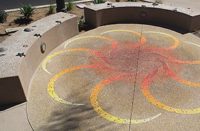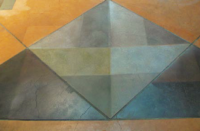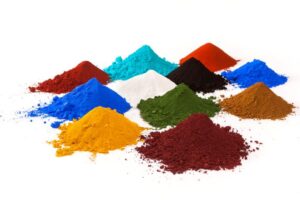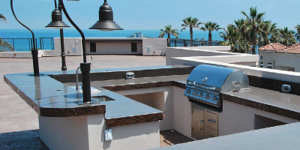Keep track of the details. The most important thing with maintaining good color across a large job is consistency. From the obvious factors (color, admixture and water-to-cement ratios, temperature, humidity) to the less-tangible ones (soil type and moisture content of the subgrade, amount of time the concrete and color spend in the mixer, slump at the time of placement), document everything thoroughly and keep it the same from batch to batch.
Go for a low water-to-cement ratio. Opting for a mix design with high cement content and a water-reducing admixture will help keep your colors evenly distributed.
Build a relationship with your ready-mix supplier. Getting to know them not only enables you to check that their consistency is reliable, but also gives you the chance to work with them to develop just the right mix for your needs.
Pay attention to your subgrade. Mike Murray, of Murray Decorative Concrete Supply, says that a uniform, evenly compacted, well-drained subgrade can be almost as critical to color consistency as a good water-to-cement ratio.
Don’t overtrowel. One of the most frequent causes of discoloration in integrally colored concrete is an overtroweled surface, says Paris. Troweling the surface to a too-tight finish can seal in moisture, which may wreak havoc on otherwise good color.
Choose your curing method carefully. Most liquid curing membranes aren’t designed with integrally colored concrete in mind and can sometimes discolor the surface of the concrete or interfere with moisture content. Look for a curing method that’s designed specifically for integrally colored concrete.















